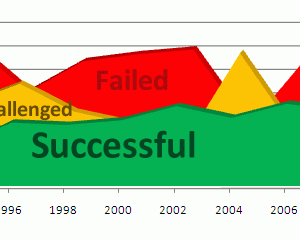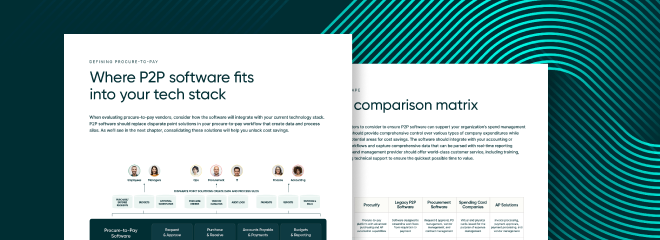Procure-to-Pay Cloud Software Features.
Lorem Ipsum

Source: http://blog.casagrande.la/
Implementing new technology or systems has always been difficult. Most companies fail when implementing new technology, albeit the success rate has improved slightly over time.
ERP procurement implementation: a high failure rate
This chart, produced by the Standish Group, projects an idea of IT implementation over time. So, what you can see is that IT implementation is, gradually, becoming more successful.
However, the fact of the matter is, IT projects, on average, are considered either challenged or failed. Challenged means that the IT implementation went over budget or schedule. Failed means the project was a flop and the company no longer uses the IT program.
The problem, however, is that within the Enterprise Resource Planning (ERP) environment about 90 percent of ERP implementations are late or over budget, with a success rate of only 33%.
There are serious problems regarding the implementation of an ERP procurement process in project management. But it is a critical function for success.
Reducing ERP implementation failure rates
However, all is not lost. The first, and most important, step companies can take before implementing ERP systems is to have a high level of commitment from top management. Upper management must remain flexible regarding implementation costs and schedule until going live.
Involving IT and middle management in the process of implementation can help in achieving that required flexibility. Middle management, generally, has a better view of the implementation process for new systems. As such, their input is valuable in understanding the scope and scale of IT implementations.
The second step organizations must take is to set a clear distinction between who the project manager is and what tasks to expect users and management to undertake.
A third step involves data integrity issues. Keep your data clean and conduct audits on data processing and cleaning. Some problematic data involves old numbers that are no longer useful in anyway.
Starting with the three basic steps to ERP procurement process
These are only three basic steps when considering the ERP procurement process in project management. There are others, to be sure, but by starting with these three easy steps, one might be able to circumvent a lot of the problems facing IT implementation.
Editor's note Original author: Michael Fournier Original publish date: 21 May 2014 We've since updated and republished this blog post with new content.
